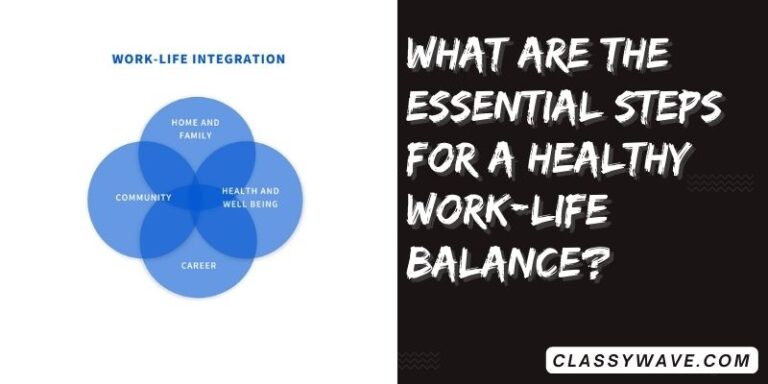What lifestyle choices can help reduce the risk of suicide?
Navigating the complexities of mental health and suicide prevention requires a multifaceted approach. From building supportive social networks to embracing positive psychology, these headings encapsulate diverse strategies. This compilation delves into key aspects such as self-care, community involvement, and cultural competence, offering insights to foster resilience and create a comprehensive framework for suicide prevention.
Building a Supportive Social Network
Cultivate a network of understanding relationships to bolster emotional resilience. Nurturing connections with friends, family, and community provides a crucial support system. Sharing experiences and feelings within this network fosters a sense of belonging, reducing the risk of isolation, a significant factor in suicide prevention. Prioritizing meaningful connections contributes to emotional well-being, creating a safety net for individuals facing mental health challenges.
Prioritizing Mental Health
Recognize the importance of mental well-being and the need to address mental health concerns proactively. Understanding the signs of distress, such as changes in behavior or mood, enables timely intervention. Seeking professional help, whether through therapy or counseling, is a crucial step in managing mental health. By prioritizing mental well-being, individuals contribute to a healthier and more resilient mindset, reducing the risk of suicide and promoting overall life satisfaction.
Promoting Healthy Coping Mechanisms
Develop positive strategies to manage stress and cope with life’s challenges. Healthy coping mechanisms, such as mindfulness, meditation, or engaging in creative outlets, provide constructive ways to process emotions. Encouraging individuals to adopt these practices promotes emotional resilience and equips them to navigate difficult situations. By fostering positive outlets for stress, the risk of resorting to harmful coping mechanisms decreases, contributing to a more robust mental health foundation.
Creating a Safe Environment
Identify and mitigate potential risks within one’s environment to establish a secure and supportive space. This involves recognizing and addressing factors contributing to mental health challenges or crises. Ensuring a safe environment encompasses physical and emotional safety, minimizing stressors, and creating a space where individuals feel secure. A safe environment is fundamental in reducing the likelihood of impulsive actions and providing a foundation for mental well-being.
Encouraging Open Communication
Break down the stigma surrounding mental health by fostering honest and supportive conversations. Encouraging open communication creates an environment where individuals feel comfortable sharing their thoughts and feelings without judgment. This promotes early intervention and support, as individuals are more likely to seek help when communication is normalized. By openly addressing mental health, communities, and workplaces contribute to a culture of understanding and empathy, reducing the risk of suicide.
Education and Awareness
Increase understanding of suicide risk factors and prevention strategies within communities and workplaces. Education and awareness efforts aim to equip individuals to identify signs of distress and intervene effectively. By promoting a collective understanding of mental health challenges, societies can reduce stigma and encourage early intervention. Spreading awareness about available resources and support services further strengthens the community’s ability to respond to individuals in crisis, contributing to a safer and more supportive environment.
Engaging in Regular Physical Activity
Recognize the mental health benefits of regular physical activity and incorporate exercise into daily routines. Physical activity has been shown to positively impact mood, reduce stress, and enhance overall well-being. Encouraging individuals to exercise regularly contributes to a healthier lifestyle, both physically and mentally. By prioritizing physical activity, individuals build resilience to life’s challenges, potentially reducing the risk of mental health issues and creating a foundation for improved overall mental well-being.
Limiting Access to Lethal Means
Safeguard individuals by controlling access to potentially lethal means, such as firearms and medications. Limiting access to these means reduces the risk of impulsive actions during moments of crisis. Secure storage and responsible handling of firearms and medications play a crucial role in preventing self-harm. By addressing access to lethal means, communities can contribute to a safer environment and provide an additional layer of protection for individuals facing mental health challenges.
Promoting a Healthy Lifestyle
Emphasize the importance of balanced nutrition and regular sleep patterns for overall mental and physical health. A healthy lifestyle contributes to improved mood, cognitive function, and resilience to stress. Prioritizing nutritious meals and adequate sleep supports the body’s ability to cope with life’s challenges. By promoting healthy lifestyle choices, individuals can enhance their overall well-being, potentially reducing the risk of mental health issues and creating a foundation for a more fulfilling and resilient life.
Crisis Intervention and Support Services
Ensure awareness and access to crisis intervention and support services for individuals in immediate need. Helplines, counseling services, and crisis intervention resources play a critical role in providing timely assistance to those facing mental health crises. Promoting these services within communities and workplaces helps break down barriers to seeking help and encourages individuals to reach out during distress. By ensuring accessibility to crisis support, societies contribute to a safety net for those needing assistance.
Fostering Resilience Through Positive Psychology
Embrace the principles of positive psychology to enhance resilience against life’s challenges. This approach emphasizes strengths, virtues, and factors contributing to a fulfilling life. By focusing on positive emotions, individuals can develop coping mechanisms, fostering a resilient mindset. Incorporating positive psychology principles into daily life promotes mental well-being, reduces the impact of stressors, and contributes to overall emotional resilience, reducing the risk of succumbing to severe mental health challenges.
Mind-Body Connection
Recognize the intricate relationship between mental and physical well-being. Holistic approaches consider the mind-body connection, emphasizing the impact of lifestyle, nutrition, and exercise on mental health. By addressing mental and physical aspects, individuals can create a comprehensive strategy for well-being. This approach acknowledges the interconnectedness of mental and physical health, offering a more nuanced and effective approach to preventing mental health issues and reducing the risk of suicide.
Empowering Individuals Through Self-Care Practices
Encourage the adoption of self-care practices as a proactive approach to mental health. Empowering individuals to prioritize self-care involves recognizing personal needs and taking intentional steps to meet them. This may include setting boundaries, practicing mindfulness, and engaging in activities that bring joy. By fostering a culture of self-care, individuals gain the tools to manage stress, build resilience, and navigate challenges effectively, reducing the likelihood of succumbing to severe mental health issues, including suicidal ideation.
Community Involvement and Suicide Prevention
Harness the strength of communities to participate in suicide prevention efforts actively. Community involvement fosters a sense of belonging and support, reducing social isolation—a significant risk factor for suicide. Through collective efforts, communities can implement awareness campaigns, support networks, and educational programs. Empowering individuals to engage with their communities actively enhances the overall protective factors against suicide, creating a supportive environment where individuals are more likely to seek help and receive timely intervention.
Cultural Competence in Suicide Prevention Programs
Acknowledge and address cultural nuances in suicide prevention strategies. Cultural competence involves understanding diverse belief systems, values, and norms to tailor interventions effectively. Culturally sensitive programs ensure that prevention efforts resonate with individuals from various backgrounds. By incorporating cultural competence, societies can break down barriers to seeking help, reduce stigma, and provide more inclusive support. This approach acknowledges the diversity of experiences and ensures that suicide prevention efforts are accessible and relevant across different cultural contexts.
Conclusion
In conclusion, the outlined headings illuminate a holistic roadmap for suicide prevention, emphasizing integrating diverse strategies. From fostering resilience through positive psychology to promoting cultural competence, each facet contributes to a comprehensive approach. By prioritizing mental health, building supportive communities, and embracing innovative solutions, societies can forge a path toward a more compassionate and resilient future. Through collective efforts, we can mitigate the risk of suicide, fostering environments where individuals feel supported, understood, and equipped with the tools for mental well-being.
FAQs
Question: How can I support a friend experiencing mental health challenges?
Answer: Offer a listening ear, express empathy, and encourage professional help when needed. Your support matters.
Question: What are effective self-care practices for mental well-being?
Answer: Prioritize sleep, engage in activities you enjoy, set boundaries, practice mindfulness, and seek social connections for balance.
Question: How can communities actively contribute to suicide prevention?
Answer: Implement awareness campaigns, establish support networks, and promote education on mental health within the community.
Question: Are there specific cultural considerations in suicide prevention?
Answer: Yes, understanding diverse cultural perspectives is crucial for tailoring interventions, reducing stigma, and providing inclusive support.
Question: What role does technology play in modern suicide prevention efforts?
Answer: Technology enables access to crisis intervention resources, helplines, and online support communities, offering valuable assistance in times of need.







